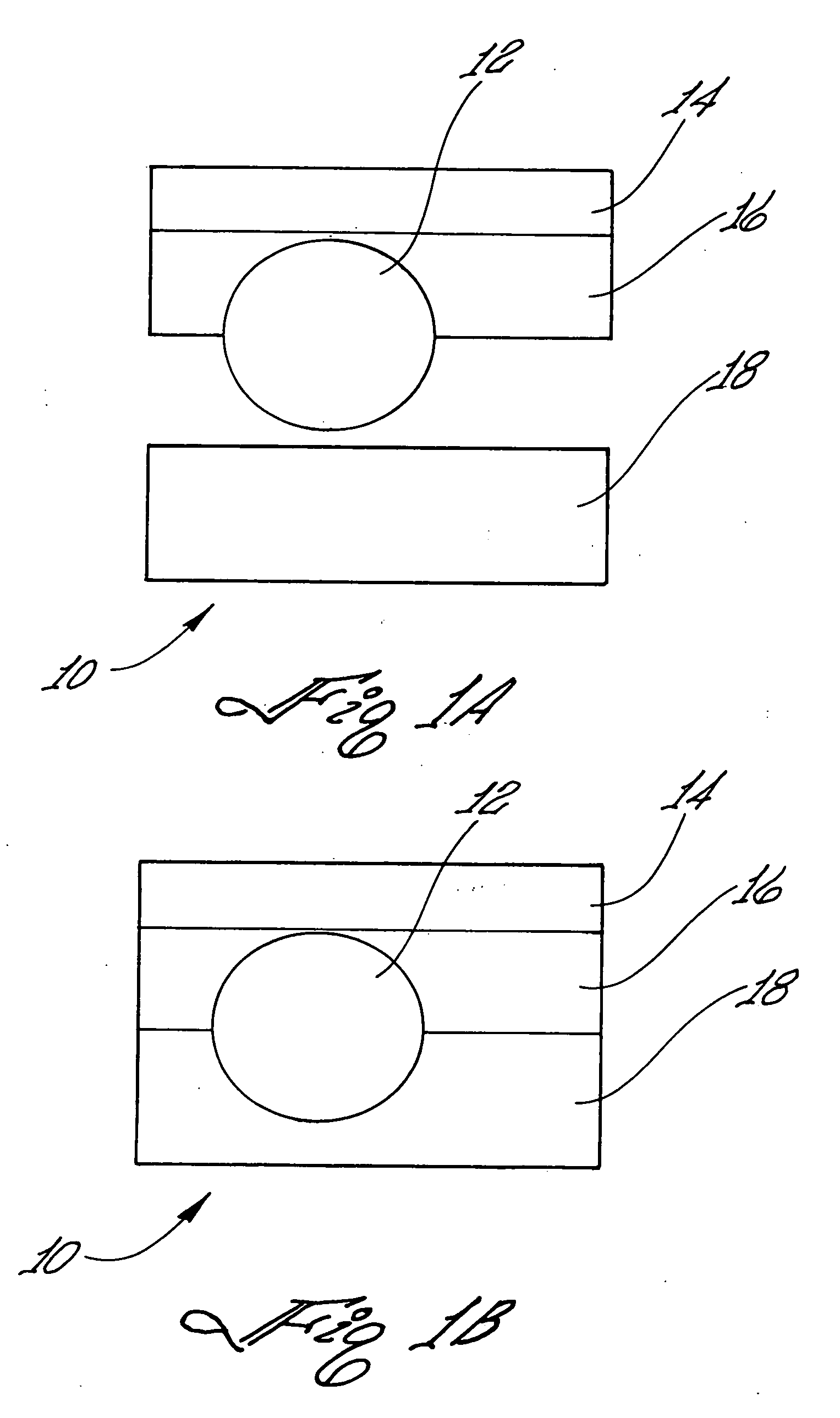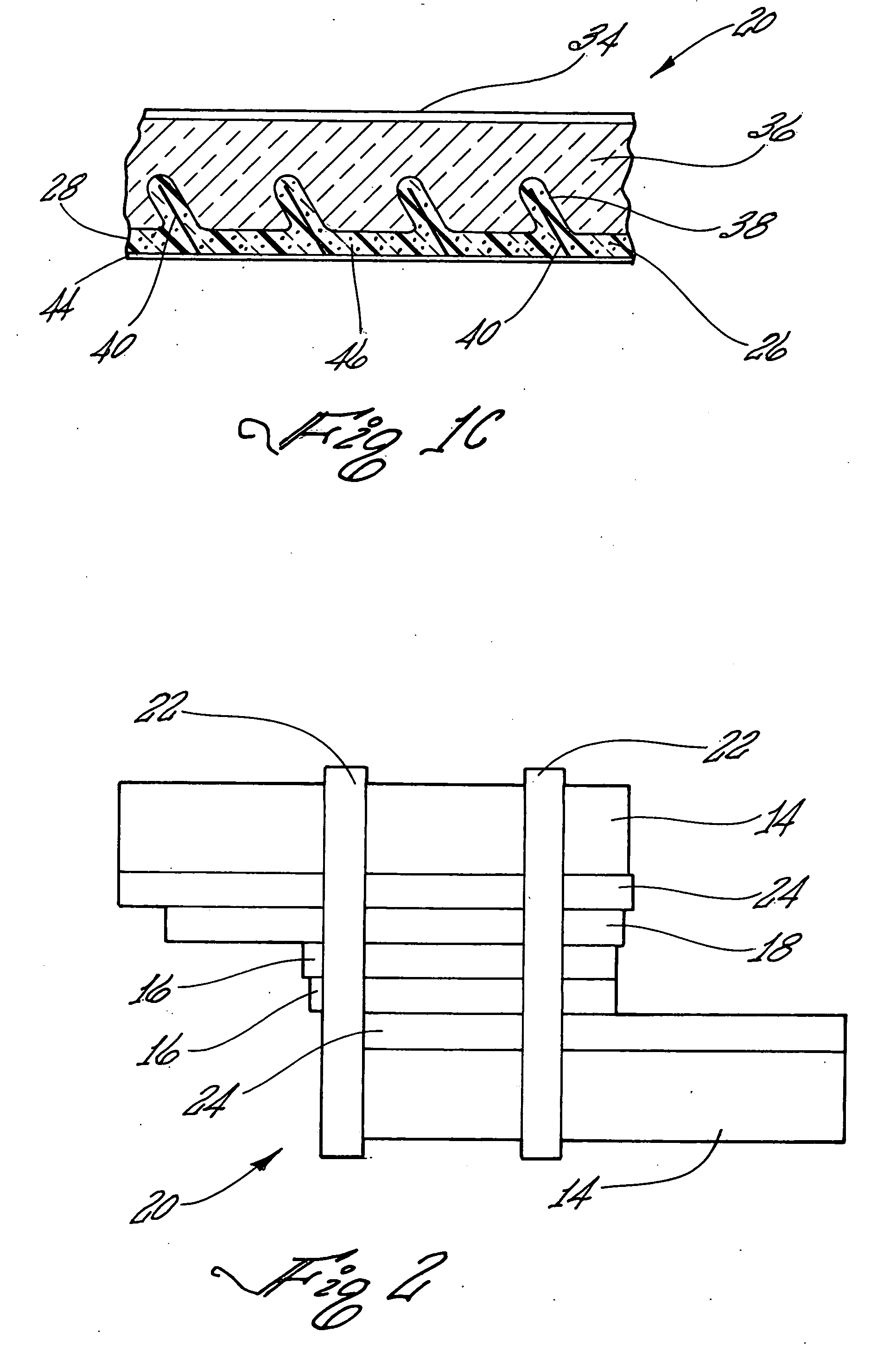Method for surface imprinted films with carbon nanotubes
a technology of carbon nanotubes and imprinting films, applied in nanoinformatics, organic semiconductor devices, manufacturing tools, etc., can solve the problems of limiting the application of nil to flexible plastic substrates envisioned, the relative geometry of nanoscale components is limited, and the process is difficult to achieve the effect of achieving the effect of nil application
- Summary
- Abstract
- Description
- Claims
- Application Information
AI Technical Summary
Benefits of technology
Problems solved by technology
Method used
Image
Examples
examples
[0040] Substrates were prepared and cleaned. The preparation of the Sol-gel and conjugated polymer solutions were formulated and desired micro- and nano-structured molecules were dispersed in these solutions.
[0041] Substrates chosen for this embodiment were fluorine-doped tin oxide (SnO2:F) coated glass, purchased from Hartford Glass cut to size 3 inches by 1 inch. The substrates were cleaned by immersion in dilute alconox solution (detergent) at 50° C. for 1 hour, followed by rinsing with ultrapure water (17.9 Mega Ohm resistivity), isopropanol, chloroform, and absolute ethanol (absolute being 200 proof).
[0042] The sol-gel solution was prepared by mixing 9.8 mL ethanol (100%), 250 μL ultrapure H2O, and 1 drop of concentrated nitric acid (HN03) in a vial. It was desirable to include an alcohol and water mix ratio of about (1:0.025). Nitric acid was utilized for acidification of the alcohol / water mix. The vial was then transferred to a glove-box purged with N2 gas for approximately...
PUM
| Property | Measurement | Unit |
|---|---|---|
| width | aaaaa | aaaaa |
| diameter | aaaaa | aaaaa |
| diameter | aaaaa | aaaaa |
Abstract
Description
Claims
Application Information
 Login to View More
Login to View More - R&D
- Intellectual Property
- Life Sciences
- Materials
- Tech Scout
- Unparalleled Data Quality
- Higher Quality Content
- 60% Fewer Hallucinations
Browse by: Latest US Patents, China's latest patents, Technical Efficacy Thesaurus, Application Domain, Technology Topic, Popular Technical Reports.
© 2025 PatSnap. All rights reserved.Legal|Privacy policy|Modern Slavery Act Transparency Statement|Sitemap|About US| Contact US: help@patsnap.com


